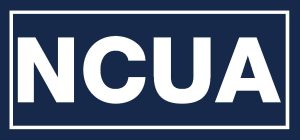When you need access to a large amount of money rather quickly, there are a few different options available, including personal loans and personal lines of credit. Both offer consumers access to funds that can be used for almost any purpose, including financing a trip, consolidating debt, or even paying for a wedding.
You may be wondering about the difference between a personal loan and a personal line of credit. When does a personal loan make the most sense, or when is a personal line of credit the better option? The answer depends on a few key factors, like how you plan to use the money, how much flexibility you need, and more.
Keep reading to learn about these two types of loans. We look at each one more closely in terms of how you access the money you borrow, how the interest on the loans work, and how the monthly payments are structured.
Access to Funds
Personal Loan: Single, Lump-Sum Payment
Personal loans pay out an immediate lump sum ideal for one-time needs such as debt consolidation, that new kitchen or bathroom home project or funding a dream vacation. Personal loans can also help alleviate the financial stress of unexpected expenses like medical emergencies or unplanned home improvement needs. If you need money for a specific reason and don’t require ongoing access to an open line of credit, a personal loan likely makes more sense for you.
Personal Line of Credit: Ongoing Access to Funds
A personal line of credit functions in much the same way as a credit card in that you can repeatedly borrow from an available balance of funds over time.
That makes a personal line of credit an excellent option for situations where expenses may be recurring or ongoing, such as home repairs or ongoing medical expenses. For borrowers who prefer flexible and ongoing access to funds, a personal line of credit is the best choice.
Interest Rate
Personal Loan: Fixed Interest Rates
For any loan, the interest rates you receive will vary depending on your lender, credit score, and overall financial situation. But in general, rates for personal loans are fixed, so the rate you get doesn’t change over the life of the loan. They are usually also lower than rates for personal lines of credit.
However, since you access your money in a lump sum, you must pay interest on the entire loan amount beginning with the first payment.
Personal Line of Credit: Variable Interest Rates
Personal lines of credit offer exceptional flexibility, and with that flexibility usually comes variable interest rates. These rates change with market conditions, so the rate associated with your personal line of credit will rise and fall with prevailing market rates. That can be a really good thing when overall market rates fall.
Also, your interest doesn’t kick in as soon as you get a personal line of credit as it does with a personal loan. You are only charged interest on the portion of the funds you actually use, and only when you use them.
Monthly Payments
Personal Loan: Predictable Monthly Payment
With the fixed interest rate on the total amount borrowed, personal loans give you a set monthly payment for the life of the loan. Many consumers like this predictability since it can make budgeting and paying off debt more manageable.
Personal Line of Credit: Variable Based On Your Spending and Interest Rate
On the other hand, since you only make payments on the amount you have currently withdrawn, personal lines of credit have less consistent monthly payments. In addition, the variable interest rate associated with these loans can cause an increase or decrease in the payment total from time to time.
However, most consumers find the flexibility that comes with personal lines of credit well worth the variability in monthly payments.
Moreover, much like credit cards, many people prefer to pay off the balance on their lines of credit almost as quickly as they use them. So there may be instances throughout the life of your personal line of credit where you do not have a balance to pay off at all.
Deciding What’s Right for You: Personal Loan vs. Personal Line of Credit
As you can see, both loan options offer exceptional benefits and convenience. Choosing the right loan comes down to picking the one that best meets your financial needs and situation.
Generally, you will benefit the most from a personal loan if you need a lump sum with low interest and predictable payments. Alternatively, you may find a personal line of credit the better option if you want recurring access to funds without needing to reapply for financing.
No matter which financial product you choose, it pays to compare rates from several different lenders to ensure you are getting the best possible deal. You should also check your credit report before applying for either type of loan.
In addition to personal loans and personal lines of credit, credit cards are another option for funding your financial goals. But how do credit cards compare to personal loans? And which might be the better option? Learn more by clicking the box below.












